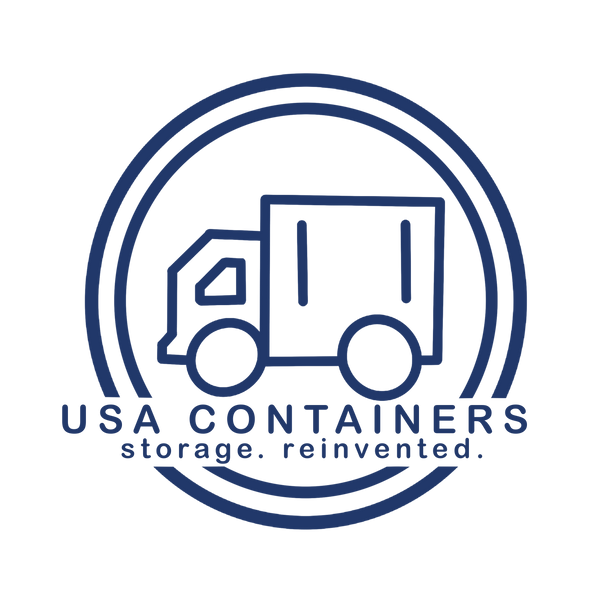
How to Treat and Prevent Rust on Your Shipping Container
Share
Shipping containers are built to endure some of the harshest environments on the planet but they aren’t entirely immune to corrosion. Over time, exposure to moisture and oxygen can lead to patches of rust.
Whether your container is used for storage, a construction site office, or a full-scale building project, treating and preventing rust should be a top priority. Fortunately, maintaining your shipping container’s condition doesn’t require a specialized skill set—just a practical approach, some basic tools, and a little vigilance.
What Causes Rust on Shipping Containers?
Shipping containers are made from corten steel, also known as weathering steel. It’s designed to develop a surface layer of rust that protects the steel underneath from further corrosion. However, when that layer is compromised—by standing water, coastal air, or physical damage—rust can begin to take hold and spread.
The most common causes include:
-
Damaged or chipped paint exposing bare metal
-
Prolonged contact with moisture, especially in humid or rainy environments
-
Salt air or de-icing chemicals, which accelerate corrosion
-
Improper site placement, such as direct contact with the ground
Even though corten steel is tough, it's not invincible. Recognizing early signs of rust and knowing how to respond can save you from much more costly repairs down the road.
Common Areas Where Rust Develops
Shipping containers tend to rust in specific areas, particularly where water collects or where coatings have been worn away. These include:
-
Roof depressions, where rainwater accumulates
-
Corner posts and door frames, which are vulnerable to wear and impact
-
Welded seams and joints, where coatings may be thinner
-
Underside of the container, especially if it rests directly on soil or damp ground
A regular visual inspection, ideally once per season, will help you spot these trouble spots early.
How to Treat Rust on a Shipping Container
When rust begins to appear, it’s essential to address it before it spreads. Follow these steps to treat existing rust and protect the steel underneath.
1. Clean the Area
Use warm, soapy water to remove dirt, debris, and any grease or oil that may be present. For larger areas, a pressure washer may be helpful. Be sure to let the surface dry thoroughly before proceeding.
2. Remove the Rust
Depending on the severity, you can use a wire brush, sanding block, or angle grinder to scrub the rust down to clean metal. The goal is to eliminate any flaky material and create a smooth, solid surface for priming.
3. Apply a Rust Converter (if needed)
If there are sections where the rust is difficult to fully remove, consider using a rust converter. This chemical treatment stabilizes the rust and turns it into a paintable surface, though it’s always preferable to remove as much rust as possible beforehand.
4. Prime the Surface
Apply a metal primer, ideally one designed for marine or industrial use. Zinc-rich primers offer excellent protection and are formulated to resist moisture and prevent rust from returning.
5. Repaint the Area
Use a high-quality exterior paint designed for metal surfaces. Marine-grade paints or direct-to-metal coatings are ideal for this application. Apply at least two coats, allowing proper drying time between each layer.
How to Prevent Rust from Returning
Preventative maintenance is the most effective way to avoid dealing with widespread rust in the future. Here are some best practices:
Elevate the Container
Do not place your container directly on soil or grass. Instead, set it on a cement foundation, gravel bed, concrete blocks, or railroad ties to allow for airflow underneath and prevent ground moisture from seeping in.
Ensure Proper Drainage
Inspect the roof periodically to remove debris like leaves or snow that can trap moisture. If possible, grade the foundation slightly so that water runs off instead of pooling around the container.
Touch Up Paint as Needed
If you notice any chips or peeling paint, touch them up promptly. Scrape away any loose material, prime the area, and repaint to maintain a consistent protective coating.
Apply a Protective Coating
For added protection—especially in coastal or high-humidity regions—consider applying a corrosion-inhibiting sealant over the entire container. These coatings are designed to repel water and provide a longer-lasting barrier than paint alone.
Maintain Door Seals and Hardware
Inspect the rubber seals around your container’s doors. If they crack or degrade, they can allow water inside, leading to rust from the inside out. Use silicone spray or rubber conditioner to keep the seals flexible and watertight.
When Professional Help Is Warranted
Surface rust is usually manageable on your own. However, if the corrosion has penetrated deep into the steel or caused structural issues—such as warping, holes, or weakened joints—it’s best to consult with a professional. Welding patches, replacing corroded components, or reinforcing structural areas requires specialized tools and training.
Rust on a shipping container doesn’t have to be a major issue if you address it promptly and take preventive measures. Routine inspections, proper site setup, and attention to paintwork go a long way in maintaining your container’s strength and appearance. With a small investment of time and effort, you can ensure your container continues to perform at its best for years to come.
Fill out the form below for a free shipping container quote from USA Containers:
